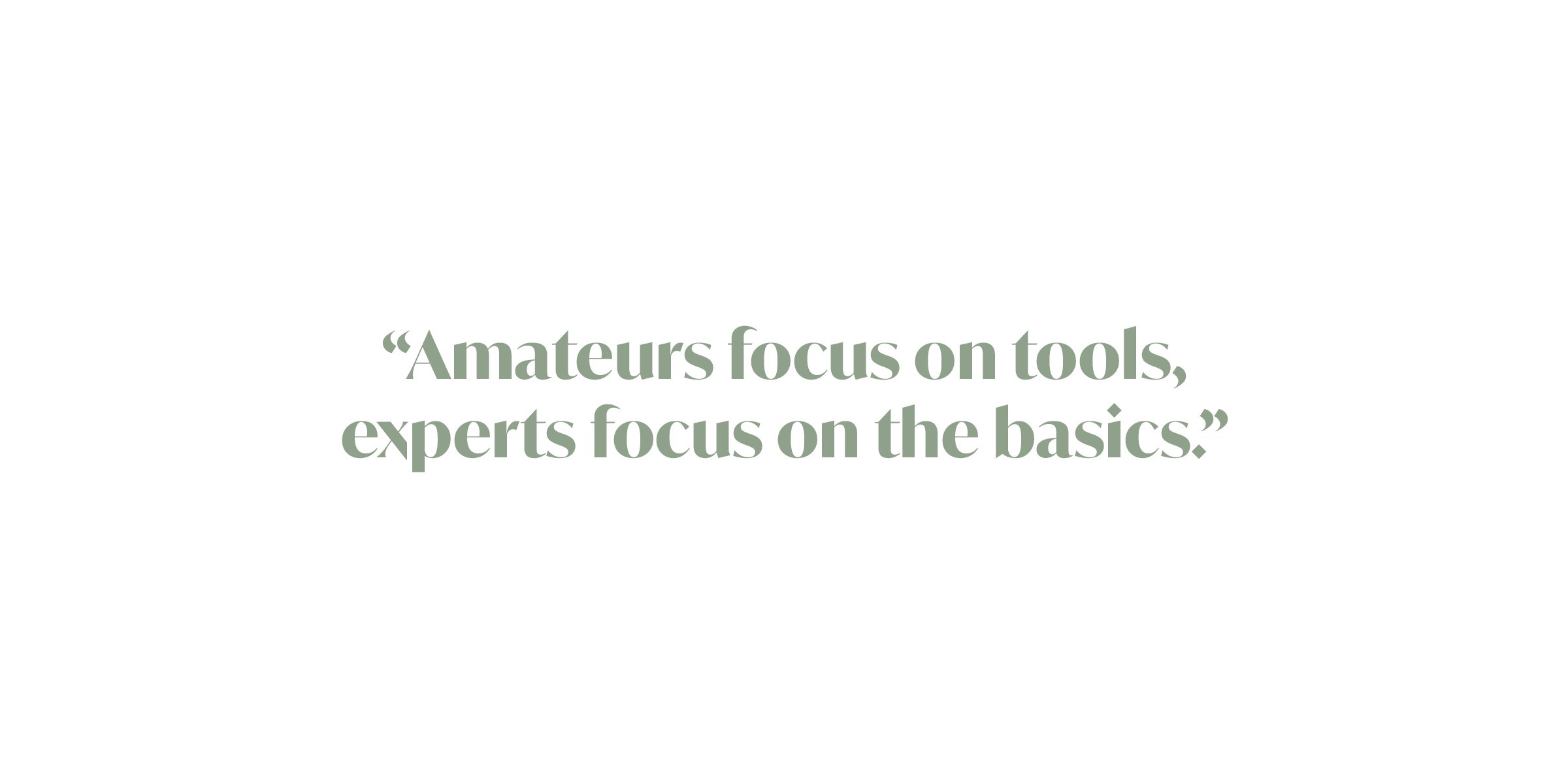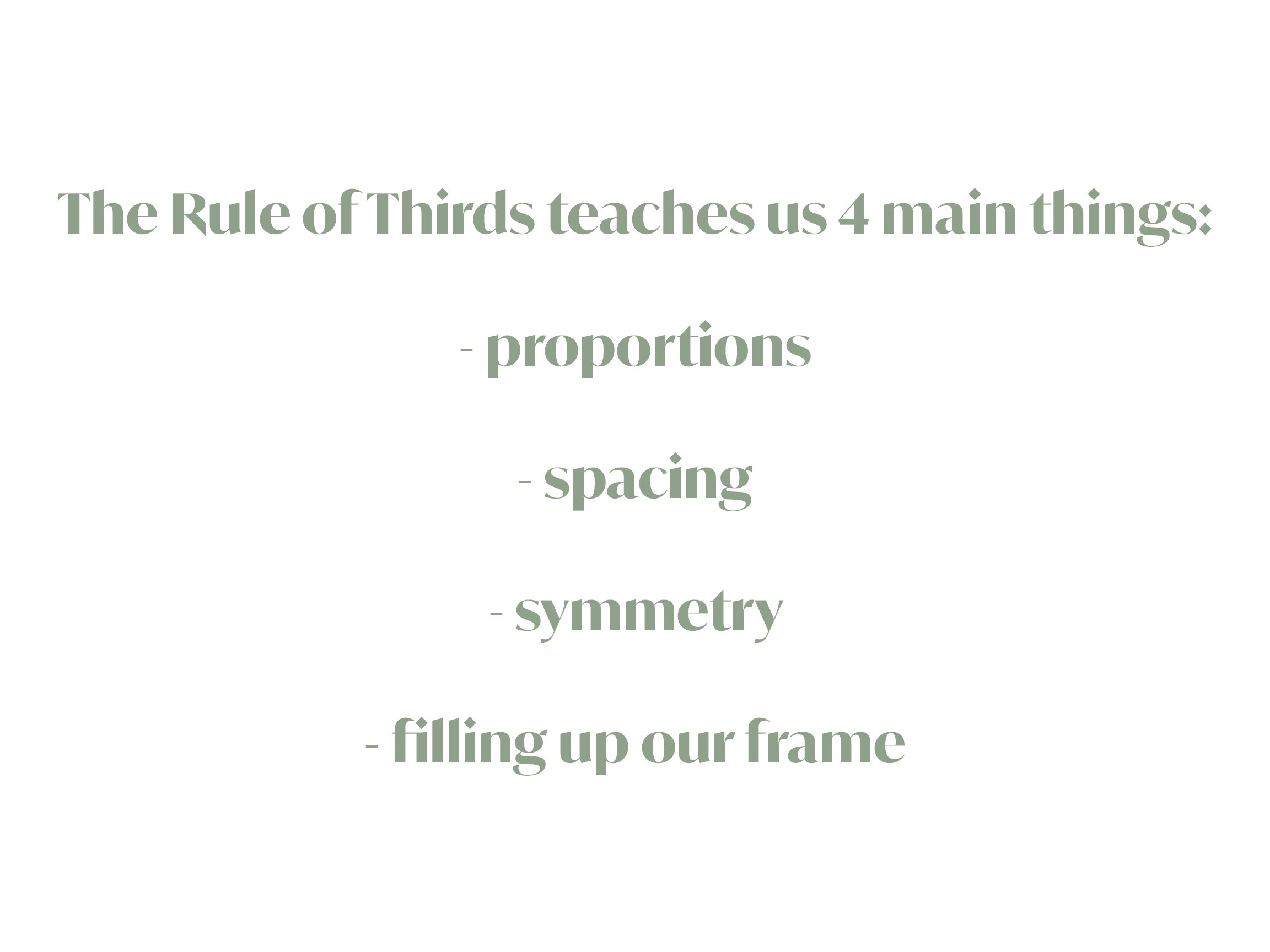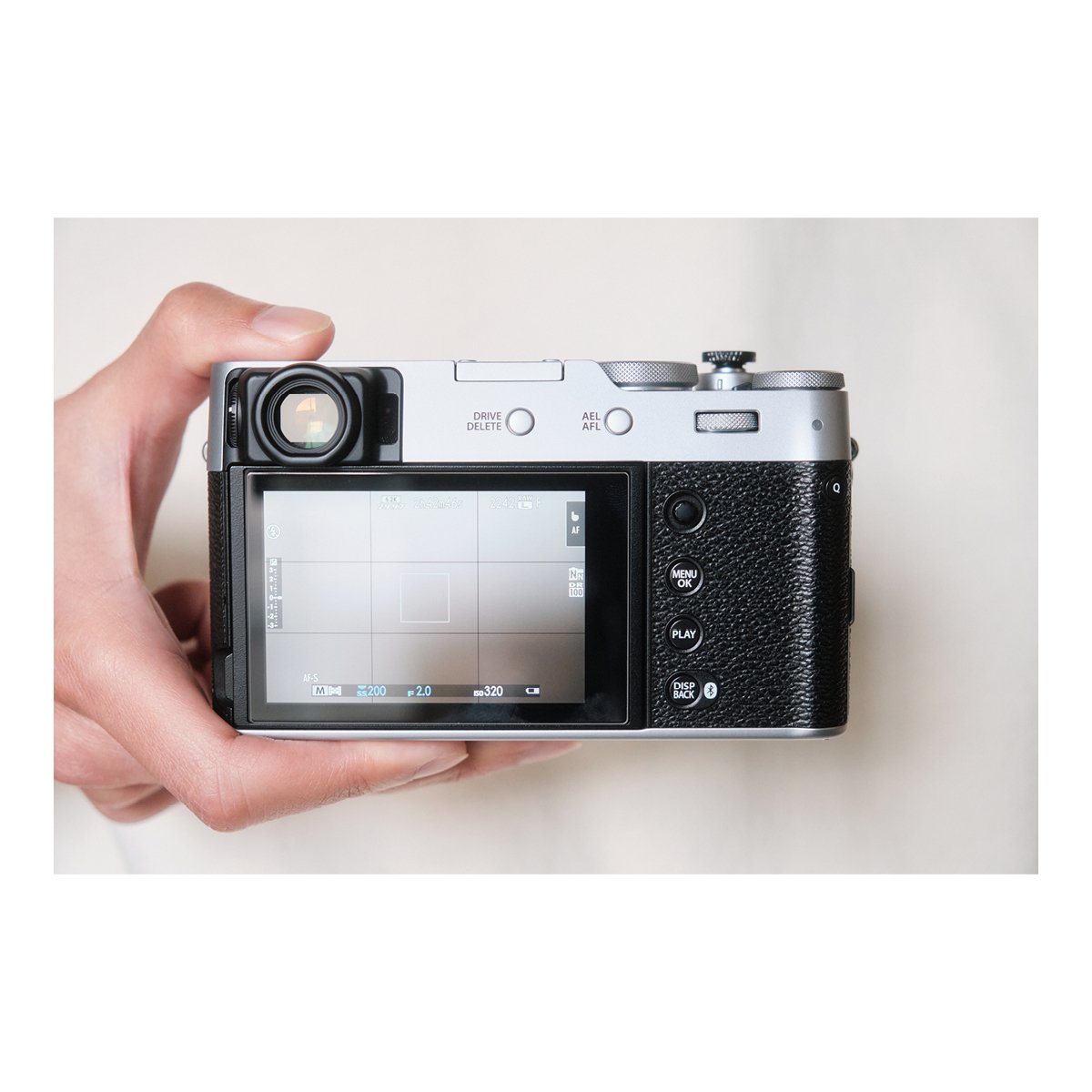The Photography Framework that Beginners Hate But Experts Love
Today I’m going to share with you the one photography framework that beginners hate but experts love.
And this is not to presume I’m an expert - I’m just a guy who takes photos.
But it was upon realizing this deeper principle, embracing this framework, and applying it to my photos in an easy and practical way that I was able to level up my photography.
So I’ll share with you all the good stuff.
But you have to promise not to click off and give me a chance to explain.
Ready?
The photography framework that beginners hate but experts love is:
“The Rule of Thirds.”
Don’t exit this - you promised.
Why Beginners Hate This
If you heard me say “Rule of Thirds” and felt the temptation to vomit, trust me, I’m right there with you.
People hate the Rule of Thirds because they’re tired of hearing it.
I am too.
Everyone and their mom talks about the Rule of Thirds, why it’s important, and why you should use it.
If you’ve read and watched enough stuff on photography, you’re probably tired of hearing the same things over and over again.
That’s understandable - but don’t worry, we’ll shed some new light on the concept today.
Another reason why beginners hate the Rule of Thirds is because they think they’re above it.
The Rule of Thirds is treated like an elementary framework, a basic composition, and “only noobs use this”.
And a lot of people are insecure with identifying as a beginner - therefore they can’t use the Rule of Thirds because “then I’ll be a noob and I don’t want to be a noob”.
Make sense?
So people hate the Rule of Thirds for two main reasons:
It’s talked about too damn much and we’re tired of hearing it
It’s associated with beginners and I don’t want to be a beginner
The thing is, until you truly understand The Rule of Thirds, you’ll always be a noob.
Because experts love it.
So lets get into that.
Why Experts Love It
Experts love the rule of thirds because experts love the basics.
You see there’s a common misunderstanding that when you reach a certain level you stop doing the elementary, basic, boring, and amateurish moves.
But that couldn’t be further than the truth.
Experts do the basics, and if anything focus on the basics more, because they know how important they are.
Plus, all the “higher level” skills stem from the basics.
So quite frankly, there is nothing but the basics.
Let’s take for example, basketball.
There’s a really good clip of Kobe talking about how the pull up jumper is the most important shot in basketball.
Because from that, all other shots stem from it.
And if you just work on your pull up jumper you’ll be able to do all the other shots because you’re just doing the same shot with a bunch of stuff before it.
But the jumper itself doesn’t change.
You don’t see Kobe or Curry stop practicing their jump shot after they’ve reached a certain level.
No - if anything, they practice it more than ever because they understand how important it is.
And these basic skills, masters make look elite.
It’s like watching art in motion.
The point is, experts don’t stop using the basics - they focus on the basics.
So if you’re a photographer and you’re tempted to not use things like the Rule of Thirds because it’s “basic” and you think you’re above it - that’s just your ego getting in the way.
But if you can embrace this concept, and use whatever is available to you to get the best photo possible, all the power to you.
There’s a common phrasing I like that states: “Amateurs focus on tools.”
I want to add a second part to this that says, “Experts focus on the basics.”
We know this right?
People love camera gear.
They are obsessed with new camera this, new feature this, and they think that getting this camera or lens is going to make them a better photographer.
Then they get the thing, become validated for their purchase with the tool itself, and never go out and take photos.
We’ve all been through some version of this cycle so it should sound familiar.
Meanwhile, more experienced photographers know getting that new camera gear isn’t really going to change their photography.
It might allow them to do different things they couldn’t do before, but overall, not really.
And many of the great photographers of the 20th century shot on cameras that would be considered junk today.
They used what was available to them and focused on photography itself.
The boring, the elementary, the talked about too much.
The basics.
Because they understood that if they wanted to improve their photography, they had to focus on the basics.
Fantastic, basics are great Andre.
But how does this apply to the Rule of Thirds itself?
Lets get to that.
What Does This Framework Actually Teach Us?
To understand the Rule of Thirds from a new angle, we must understand it’s purpose.
Because contrary to what many people think, it’s not simply dividing your frame into 9 rectangles and calling it a day.
That’s just what it seems like on the surface.
But there’s a deeper relationship here.
Let me ask you a question.
“What is the Rule of Thirds actually trying to teach us?”
That’s an extremely important question to ask because many people will look at the tool and ignore the lesson.
But if you understand the lesson, you’ll be able to apply the “Rule of Thirds” everywhere.
Lets break each one of these down.
Proportions means the size of our objects in relation to the frame and each other.
Spacing means the placement of our objects in relation to the frame and each other.
Symmetry means not simply matching opposing sides, but having an even balance or “distribution of weight” within our frame.
And filling up our frame refers to making good use of the space given to us.
Proportions, spacing, symmetry/weight, filling up our frame.
I think most photographers would agree these are important.
If this made sense to you, then you might realize that no matter what you do, as long as you’re taking a photo, you are using the Rule of Thirds.
Let me explain.
The Rule of Thirds divides your frame into two horizontal lines and two vertical lines.
These lines are just to make it easy for us to understand.
However, technically speaking, you can divide your frame into a near infinite number of horizontal and vertical lines as you see fit.
And then you’ll be using the Rule of 6s, Rule of 9s, Rule of 100s, Rule of 1000s.
But you are still using some version of the Rule of Thirds.
And as long as your subject can be compartmentalized into a section of your frame, you are using this principle.
Which is almost always.
This is why experts love this.
Because once you realize this, you understand that no matter what you do you will always be using some form, shape, or version of the Rule of Thirds.
Just like a basketball player, no matter what shot they take, they are always using some version of the jump shot.
It’s not like you can suddenly stop using it because you’re “too good for it now”.
And now you won’t dismiss the Rule of Thirds as “basic or elementary”, but instead begin to think:
“Hey if I just use this and use it well, I can take a good photo of literally anything.”
Does this make sense?
If we’re always using some version of the Rule of Thirds, why not learn to use it well, to our advantage, to take better photos?
Lets talk about how to do that.
How to Use This Practically
Now that we understand why beginners hate this, why experts love it, and why it’s actually important, lets learn to use this practically.
And I’m not going to tell you to divide your frame into 9 rectangles.
Because quite frankly, I don’t even do that.
Putting anything on my screen besides the picture interferes with what I’m seeing.
So I prefer no lines, no histograms, no leveler.
Instead, we’ll look at my favorite ways of practically applying this technique.
I do this primarily by focusing on the core principles themselves.
Remember, what does the Rule of Thirds actually teach us?
It teaches us the relationship between proportions, spacing, symmetry, and our resulting image.
And that every inch of our image has relevance.
How do we apply that?
By asking one simple question:
“How am I filling up my frame?”
This is literally, one of my favorite questions to ask myself when I’m taking pictures.
Because it takes all of these concepts, put it into one question, and makes it simple and practical.
“How am I filling up my frame?”
Imagine your photo as a 2-dimensional empty cup.
There’s only so much space in it.
Only so many things can go into it, and many things must be left out.
And if you’re filling your cup with anything but the liquid you want to drink, it will taste nasty.
Like if I added a little bit of water here, some grass here, some tequila here, hot sauce, mud, whatever.
I’d create an abomination.
But if I added the right ingredients for the perfect drink that work together, it would taste amazing.
So the world has provided you a set of ingredients to play with.
And it’s up to you to make them work together.
Think of your frame as an empty cup.
What you choose to put in each section will affect the overall “taste” of your image.
It could mean empty space, it could mean another subject, it could even mean not using an ingredient.
And the challenge for photographer is to make all of these individual ingredients work together in a way where the proportions, spacing, and symmetry makes sense.
Does that make sense?
This applies to all of photography.
From street photography, sunset gradients, everyday candid photos, landscapes, etc.
If you ask yourself, “How am I filling up my frame?”, your photos will get that much better.
Another very practical phrase that does the same thing is:
“No wasted space”.
Meaning every single nanometer of my image has to be filled with something that aids the image.
If there is something in the frame that is not helping the photo, it’s hurting it.
And so by repeating to myself “no wasted space”, I can remind myself to be intentional about what I’m putting in my drink.
And this all ties back to the Rule of Thirds.
The Rule of Thirds is simply an easy way for us to understand and apply those 4 basic principles.
But if you follow the root principles of this framework themselves, you can apply the Rule of Thirds without thinking about the Rule of Thirds.
Because remember, whether you like it or not, you are always using some form of the Rule of Thirds.
It may be the Rule of 1000s, or Rule of 10,000s, but it’s always there.
So that’s the photography framework that beginners hate but experts love.
I hope this was able to reframe how you think about the Rule of Thirds in a practical way.
If this was helpful, please share this with a friend who may also find this helpful.
Also check out “The Sinking Sun”, my new photography zine, if you’re interested.
Thanks for reading - have a great day!







